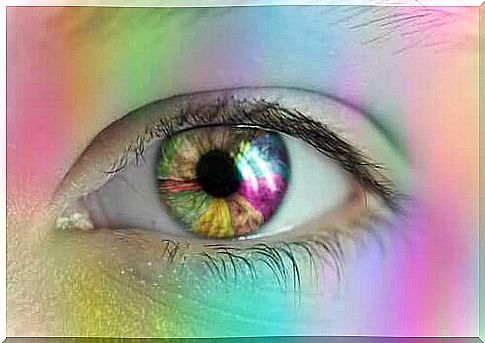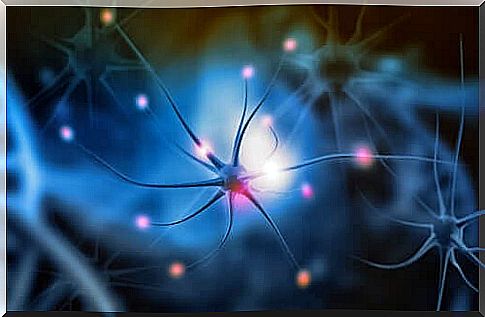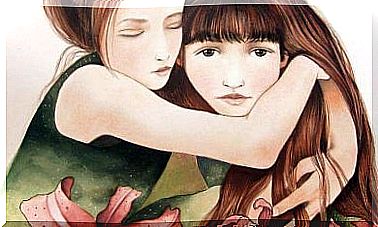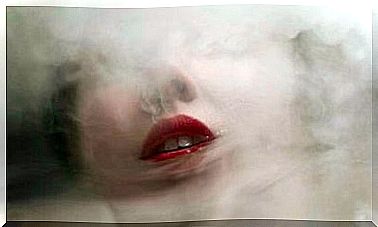Vision Of Color: How Do We Perceive Colors?

The vision of color is a subject as interesting as it is complex. Many of us wonder if we all really think of color the same way. Who hasn’t asked a friend a question like: what if what’s red for you is blue for me?
The visual system perceives achromatic colors (white, black and gray) and chromatic colors. When we talk about color, we are referring to chromatic colors, and the correct term is shade . However, the most extensive and well-known concept is that of color.
The basic question that many people have asked themselves on many occasions is: what determines the color we perceive from a visual stimulus? Or put another way, why do you see colors and how do we see them? Different theories have addressed the issue of color perception throughout history. In this article, we will introduce you to the most important ones.
Color vision: components and opposing process
In 1802, Thomas Young proposed one of the first theories on the vision of color: the theory of components. Or trichromatic theory. Then, in 1852, it was polished by Hermann von Helmholtz. According to this theory, there are 3 different types of color receptors (cones) and each of them has different spectral sensitivity. In addition, the color of a stimulus would be codified by the amount and proportion of activity of these receptors.
On the other hand, in 1878, Ewald Hering proposed the theory of the opposite process. He thus hypothesized the existence of 2 types of cells in the visual system. One to codify the color and another more intended to codify the brightness. According to him, each type of cell codified the perception of 2 complementary colors (pairs of colors that produce white or gray when mixed in the same proportions).

But, what was Hering basing his theory on? He observed that the complementary colors are all unique. As the author said, “there is no bluish yellow or green to shades of red” . Another argument that participated in the construction of his theory was that the post-image produced by staring at the color red is green, and vice versa. Just as the post-image produced by looking at the color yellow is blue, and vice versa.
So, for many years, researchers leaned more towards one or the other theory, but over time it was proven that the two codification mechanisms coexist in the visual system. Let’s dig deeper into this topic.
Evidence of the two theories in the context of color vision
Young’s theory was not confirmed until the early 1870s. Thanks to microspectrophotometry (a technique for measuring the absorption spectrum of the photopigment contained in a cone), we have been able to observe the existence of 3 types of cones in the retina in living beings with good color vision .
At the same time, the researchers found that each of these cones contained a different photopigment, with its particular absorption spectrum. Thus, some cones are more sensitive to wide wave longitudes, others to medium waves, and still others to short waves.
As for Hering’s theory, Chatterjee and Callaway (2003) proved the opposite process of color at all levels of the retino-geniculo-striate system. Thanks to them, we were able to discover that at each level, there are cells which respond in one direction to a color and in the opposite direction to its complementary color.
Color consistency and the Retinex theory
Previous theories lacked an explanation of a fundamental aspect in the perception of color: the consistency of color. This concept refers to the fact that the color that we perceive of an object is not simply a function of the wavelengths being reflected.
For example, when we see our living room at daybreak, the light is not the same as at noon. The wave longitudes change, but we perceive the same color. The wall of our room can seem more or less dark depending on the light. However, we know that it is always the same color.
Thus, color consistency is “the tendency of an object to remain the same color despite large changes in the longitude of the reflected light wave (Pinel, 2012)”. In fact, it provides an adaptive function to our ability to distinguish certain objects from others. Because if it were otherwise, the color would change at the same rate as the brightness.
Retinex theory
Land’s Retinex theory (1977) holds that “ the color of an object is determined by its reflectance (the proportion of light of different wavelengths reflected in an area)” .
Hurlbert and Wolf (2004), following this theory, state that “ the visual system calculates the reflectance of areas. Thus, he perceives the colors by comparing the light reflected by adjacent – close – surfaces on at least three bands of different wavelengths (short, medium and wide) ” .
In other words, the visual system is able to calculate the longitudes of waves reflected in an area. And to continue to perceive color, despite the changes in illumination. It doesn’t matter if an object receives more or less light, its color will not change for us.
For Shapely and Hawken (2002), Land’s theory is important. Indeed, it assumes the existence of a type of cortical neurons which are involved in chromatic vision. In other words, in the vision of color.

Science continues to advance in color vision research
As we have just seen, despite the great scientific progress that has been made in terms of brain function, there is still a long way to go and many discoveries to be made. The vision of color is a subject that remains topical in research. Little by little, new discoveries are made. Theories evolve and this implies that some can be dismissed, others supplemented, and still others completely new.










